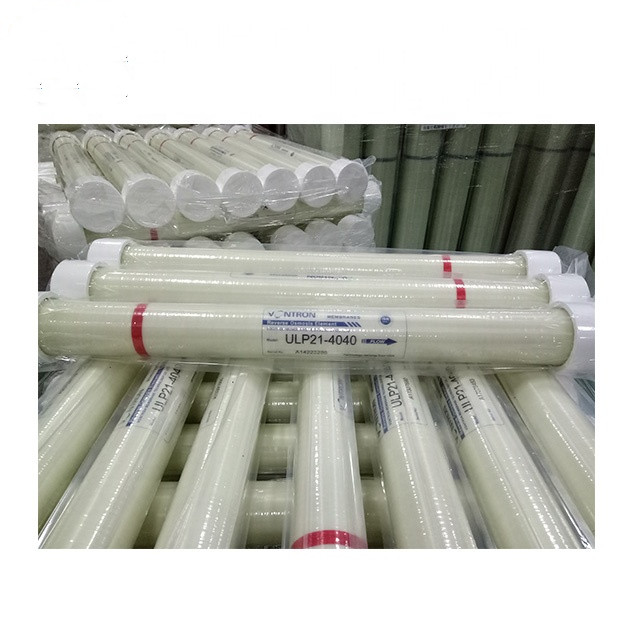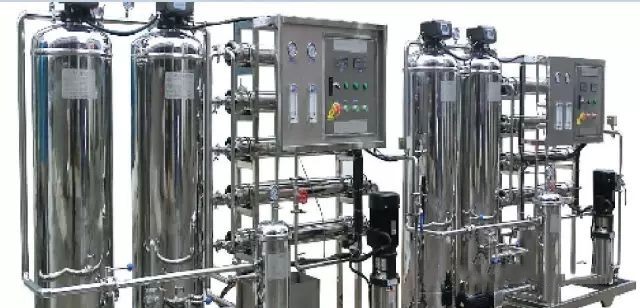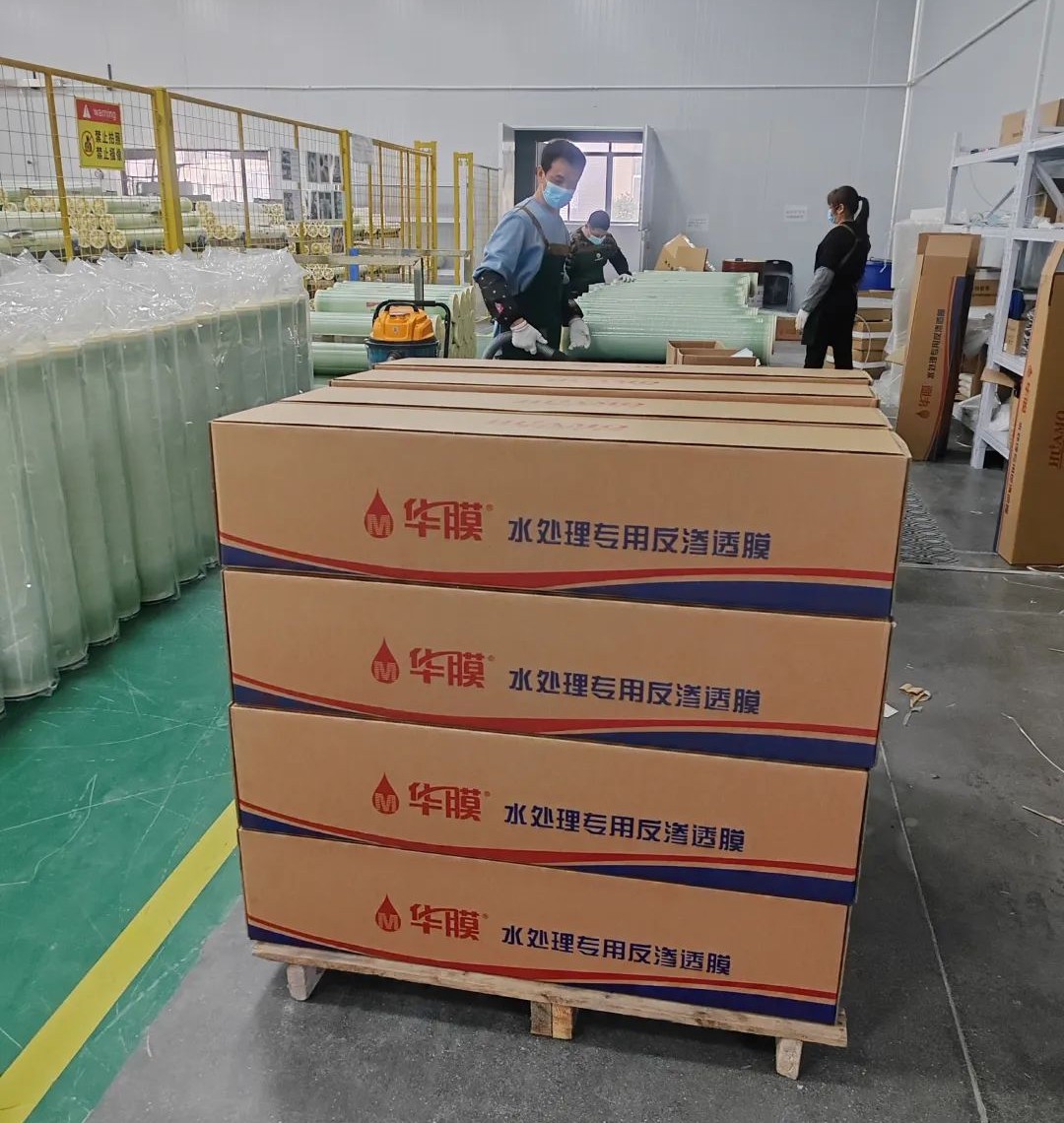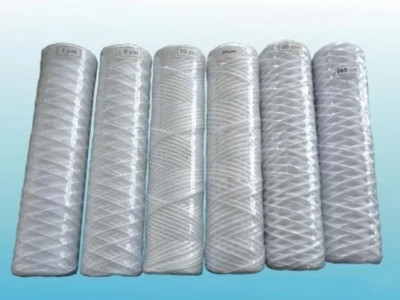RO reverse osmosis membrane pore size is as small as nanometer (1 nanometer = 10*-9 meters), under a certain pressure, water molecules can pass through the RO membrane, while inorganic salts, heavy metal ions, organic matter, colloids, bacteria, viruses and other impurities in the source water cannot pass through the RO membrane, thus making a strict distinction between pure water that can be passed through and concentrated water that cannot be passed through.
March 22, 2023

RO membrane is most used in water purifier, as one of the filtration devices of water purifier, it plays the most central role in the filtration of tap water to water purification, RO membrane can effectively remove calcium, magnesium, bacteria, organic matter, inorganic matter, metal ions and radioactive substances, etc. The water purified by this device is crystal clear, sweet and sweet. The device is suitable for families and hotels, hotels, hospitals and other enterprises and institutions to use for drinking water purification.
General tap water after RO membrane filtration of pure water conductivity 5μs/cm (RO membrane filtered water conductivity = incoming water conductivity × desalination rate, general imported reverse osmosis membrane desalination rate can reach more than 99%, 5 years of operation can guarantee more than 97%. For higher requirements of water conductivity, 2-stage reverse osmosis can be used, and then after a simple treatment, the water conductivity can be less than 1μs/cm), in line with the standard of laboratory tertiary water. After atomic level ion exchange column filtration, the resistivity of the water can reach 18.2M.cm, which exceeds the standard of the first level of laboratory water.

Reasons for the shortened service life of RO
1、Improper operation of reverse osmosis equipment causes damage to membrane performance
There is residual gas in the reverse osmosis equipment operating under high pressure, the formation of gas hammer will damage the reverse osmosis membrane.
There are often two situations:
A, after the equipment is emptied, re-run, the gas is not exhausted on the rapid pressure boosting operation. The remaining air should be exhausted at a pressure of 2 to 4 bar, and then gradually increase the pressure to run.
B. When the joint between the pretreatment equipment and the high pressure pump is not sealed well or leaked (especially the microfilter and the pipeline after leaking), when the pretreatment water supply is not sufficient, such as the microfilter is clogged, the vacuum in the poorly sealed place will suck in some air. Should clean or replace the microfilter, to ensure that the pipeline does not leak. In short, there should be no air bubbles in the flowmeter gradually increase the pressure of the operation, the bubbles found in the operation should gradually reduce the pressure to check the cause.
2、Incorrect method of reverse osmosis equipment shutdown
A: When shutting down, the rapid pressure reduction is not thoroughly flushed. As the concentration of inorganic salts on the thick water side of the membrane is higher than that of the raw water, it is easy to scale and pollute the membrane.
B. Flushing with pretreatment water with chemical reagents. The water containing chemical reagents may cause membrane contamination during equipment shutdown.
When the reverse osmosis equipment is ready to shut down, it should stop adding chemical reagents and gradually lower the pressure to about 3 bar and flush with pretreatment water for 10 min until the TDS of the concentrated water is close to the TDS of the original water.
3, reverse osmosis equipment disinfection and maintenance is not effective, resulting in microbial contamination
This is a common problem in the use of composite polyamide membrane, because the polyamide membrane residual chlorine resistance is poor, in the use of chlorine and other disinfectants are not properly added, coupled with the user does not pay enough attention to the prevention of microorganisms, which can easily lead to microbial contamination. At present, many manufacturers of pure water microbial exceed the standard, is the disinfection, maintenance is not effective.
Mainly: factory, RO equipment does not use disinfectant maintenance; equipment installed without the entire pipeline and pretreatment equipment disinfection; intermittent operation does not take disinfection and maintenance measures; no regular disinfection of pretreatment equipment and reverse osmosis equipment; maintenance solution failure or insufficient concentration.
4、Reverse osmosis equipment residual chlorine monitoring is not effective
1, such as dosing pump failure or chemical liquid failure, or activated carbon saturation due to residual chlorine damage to the membrane.
2, cleaning is not timely and incorrect cleaning methods resulting in damage to the membrane performance
Equipment in the process of use, in addition to the normal decay of performance, due to pollution and the decay of equipment performance is more serious. Usually the main pollution are chemical scale, organic and colloidal pollution, microbial contamination, etc.. Different contaminants show different symptoms. The symptoms of membrane contamination also vary from one membrane company to another.
In the project, we found that the symptoms of contamination vary with the length of time. For example, if the membrane is contaminated with calcium carbonate scale, the main symptoms are rapid decrease of desalination rate, slow increase of pressure difference, and no significant change of water production, and the performance can be fully restored by citric acid cleaning. Pollution time for a year (a pure water machine), salt flux from the initial 2mg / L rose to 37mg / L (the original water for 140mg / L ~ 160mg / L), water production from 230L / h down to 50L / h, after cleaning with citric acid, salt flux dropped to 7mg / L, water production rose to 210L / h.
In addition, pollution is often not a single, the symptoms of its performance also have certain differences, making the identification of pollution more difficult.
Identify the type of pollution to integrate raw water quality, design parameters, pollution index, operating records, equipment performance changes and microbial indicators to determine:
(1) colloidal pollution: colloidal pollution occurs, usually accompanied by the following two characteristics:
A, pre-treatment in the microfilter clogged quickly, especially the differential pressure increases quickly.
B, SDI value is usually above 2.5.
(2) Microbial contamination: When microbial contamination occurs, the total number of bacteria in the permeated water and concentrated water of RO equipment is relatively high, and usually there must be no maintenance and disinfection as required.
(3) calcium scale: can be based on raw water quality and design parameters to determine. For carbonate water, if the recovery rate is 75%, when the design is added scale inhibitor, the LSI of the concentrated solution should be less than 1; when no scale inhibitor is added, the LSI of the concentrated solution should be less than zero, and generally no calcium scale will be produced.
(4) Can be used 1/4 inch PVC plastic pipe inserted into the component to test the performance changes of different parts of the component to judge.
(5) Judge the type of contamination according to the change of equipment performance.
(6) can be acid washing (such as citric acid, dilute HNO3), according to the effect of cleaning and cleaning fluid to determine the calcium scale, further confirmed by cleaning fluid composition analysis.
(7) chemical analysis of the cleaning fluid: take the original water, cleaning fluid, cleaning fluid, three samples of analysis.
After determining the type of contamination, can be cleaned according to the method in Table 1, and then disinfected and used. In the type of contamination can not be determined, usually use cleaning (3) + disinfection + 0.1% HCl (pH 3) steps to clean.

Prevention of membrane performance damage and maintenance
1、Prevent damage to membrane performance
New reverse osmosis membrane elements are usually stored in sealed plastic bags after being infiltrated with 1% NaHSO3 and 18% glycerin solution. In the case of plastic bags do not break, storage for about 1 year, will not affect its life and performance. When the plastic bag is opened, it should be used as soon as possible to avoid the oxidation of NaHSO3 in the air, which may have adverse effects on the components. Therefore, the membrane should be opened before use as much as possible.
After the commissioning of the reverse osmosis equipment, we have used two methods to protect the membrane. The equipment test run for two days (15 ~ 24h), then use 2% formaldehyde solution maintenance; or after running 2 ~ 6h, with 1% of NaHSO3 aqueous solution for maintenance (should exhaust the air in the equipment pipeline, to ensure that the equipment does not leak, close all the import and export valves). Both methods can get satisfactory results. The first method is more costly and used when idle for a long time, and the second method is used when idle for a short time.
2、Maintenance
After a period of normal operation, the membrane element will be contaminated by the suspended or insoluble matter that may exist in the feed water. When the system performance decreases by 10% under standard conditions, or when scaling or fouling obviously occurs, timely cleaning should be carried out. Periodic water flushing and chemical dosing cleaning can restore the performance of the membrane element and extend the life of the element.
During short-term system shutdown, the system should be flushed every 5 days and the valve should be closed after flushing to prevent scaling and blockage.
For long-term system shutdown (more than 30 days), add 1% sodium bisulfite solution to prevent bacteria from multiplying.
Detailed Operating Instructions for Automatic Dosing Systems
December 26, 2024
Characteristics and Applications of Precision Filters
December 19, 2024



